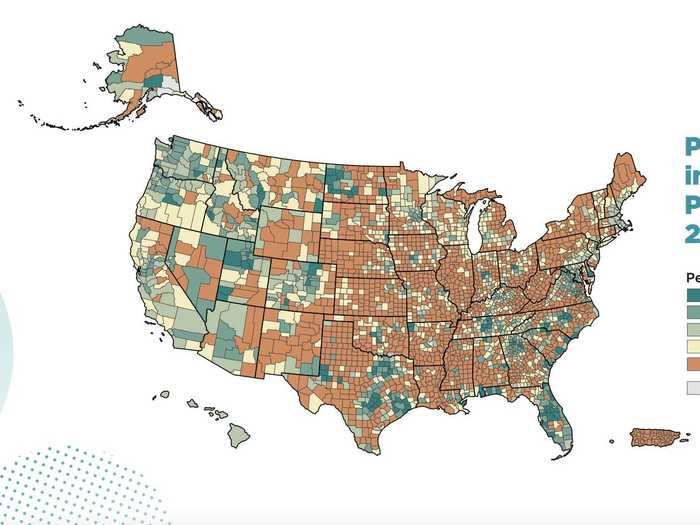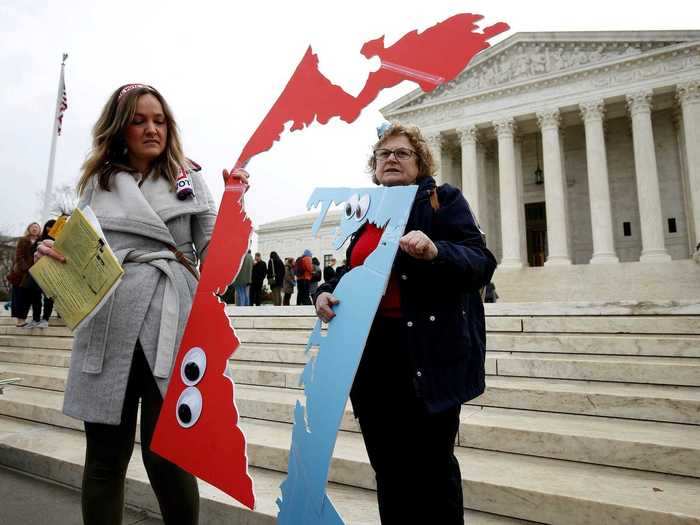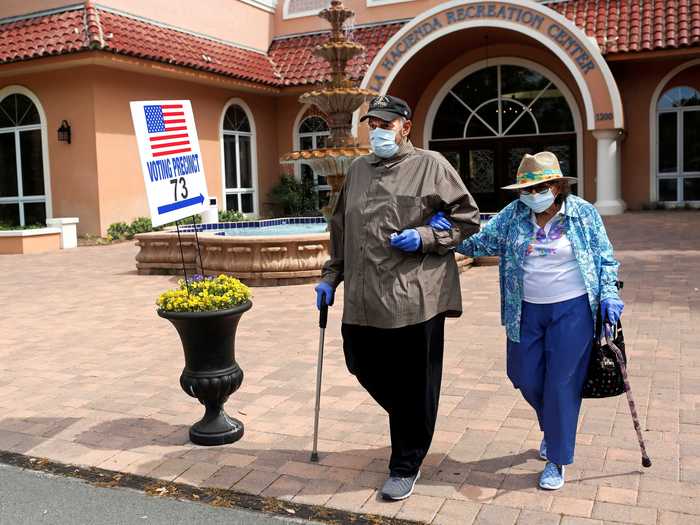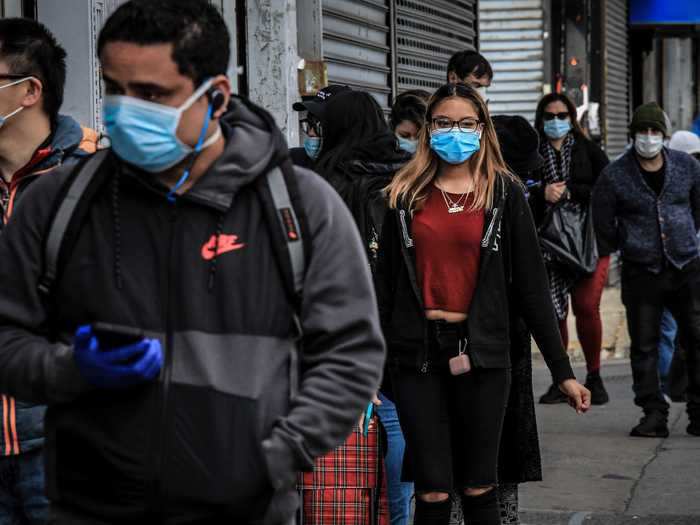US Census workers stand outside Lincoln Center for the Performing Arts on September 24, 2020 in New York CityNoam Galai/Getty Images
- The 2020 Census data was released Thursday and showed a diversifying country.
- Populations also declined in rural areas and The Villages proved to be the fastest-growing US metro area.
- Here are other takeaways from the long-awaited report.
New demographic data from the 2020 Census was released on Thursday, revealing how the makeup of The United States has changed in the last 10 years.
The long-awaited Census information is usually released by March 30 but was held up by coronavirus-related delays.
Here are five of the biggest takeaways from the released data:
America's white population dropped for the first time in recorded history
People walk through Herald Square on a warm day on June 7, 2021 in New York City.
Angela Weiss/AFP/Getty Images
For the first time ever, America's non-Hispanic white population declined, per Census data.
In 2010, the population of white people was 223.6 million. As reported Thursday, that population dropped 8.6 percent, with 204.3 million people identifying as white in 2020.
Another first: the number of people identifying as white dropped below 60%.
According to the data, the percentage of participants identifying as white dropped to 57.8%, proving America is taking steps toward becoming a more diverse nation and — ultimately — a majority-minority one.
Read More
Rural areas has seen widespread population decline
This map released by the US Census Bureau shows population declines in rural areas across America.
US Census Bureau
A map released by the US Census Bureau showed just how widespread population decline has been in rural areas in the last 10 years.
Areas of red were areas that saw their population shrink, while greener counties reported population growth.
Most of Middle America saw a decrease in population growth over the last decade, according to the Census results.
Large sections of South Dakota, Nebraska, Kansas, Missouri, and Mississippi have seen declines in their population since 2010, the data shows.
Read More
Redistricting could tip the scales of power in Washington D.C.
Demonstrators rally with cut-outs of gerrymandered congressional districts in front of the Supreme Court building in 2018.
REUTERS/Joshua Roberts/File Photo
States have begun redistricting based on the 2020 Census data, Insider reports. The new numbers allow for redrawing of congressional and state legislative boundaries that will define the US's balance of power for the next decade.
When the Census Bureau released topline apportionment numbers in April, it became clear that Texas would be the biggest winner of more House seats, while many states in the Midwest and Northeast would lose seats.
According to a Republican redistricting expert, "five to seven states" will likely produce their new maps by next month, but half of states would need until the end of the year to completely redistrict.
With GOP-led governments in most states, redistricting could eliminate Democratic seats or make it easier for Republicans to win elections — a shift that could allow the GOP to reclaim control of the US House.
Read Full Story
The Villages in Florida is the fastest-growing US metro area
Residents of the The Villages, Florida on March 17, 2020.
REUTERS/Yana Paskova
The Villages in Florida is the fastest-growing US metro area, per Census data.
Since 2010, the population of the Villages — a massive retirement community — grew 39%, from about 93,000 people to about 130,000 people, CNN reports.
The community requires at least one member of each household to be 55-years-old or older. The Villages made headlines in 2020 when a Trump-supporting resident shouted "white power" while driving through the neighborhood on golf carts during a rally to support the then-president.
There are more more multi-racial people in America than ever before
New Yorkers wait in line before entering a store in Brooklyn.
Bebeto Matthews/AP
The multiracial, or "two or more races," population increased a whopping 276% from 2010 to 2020, according to US Census Bureau data.
That group grew from about 9 million people to 33.8 million people over the decade, data showed.
However, the stunning rise could be due to a change in how the Census is conducted.
For the first time, the 2020 survey asked Americans more detailed questions about their race, allowing a "more thorough and accurate depiction of how people self-identify."
Because of this, the Census Bureau warned that any takeaways regarding race and ethnicity in the last decade should be "made with caution," though they are confident that the changes reflect true changes in the American landscape and population.





